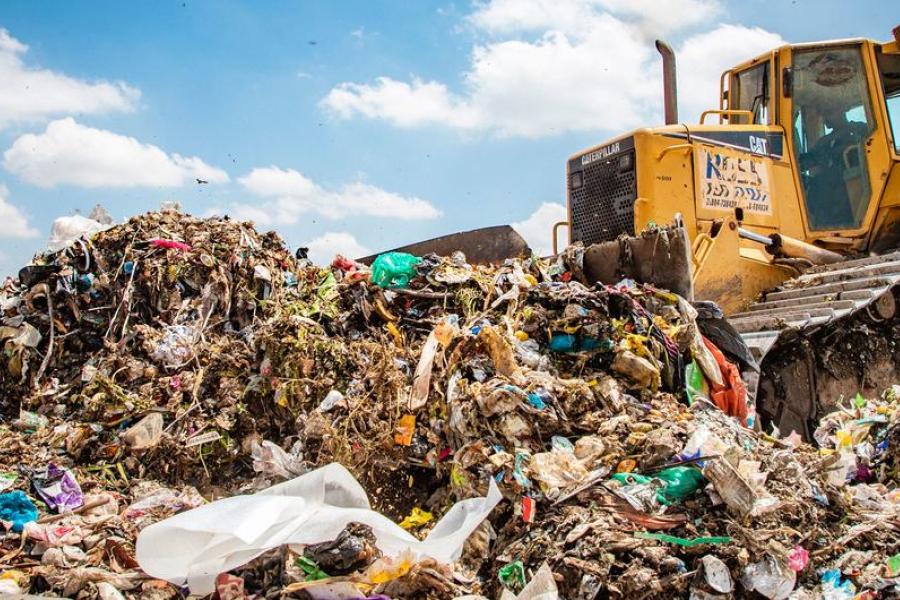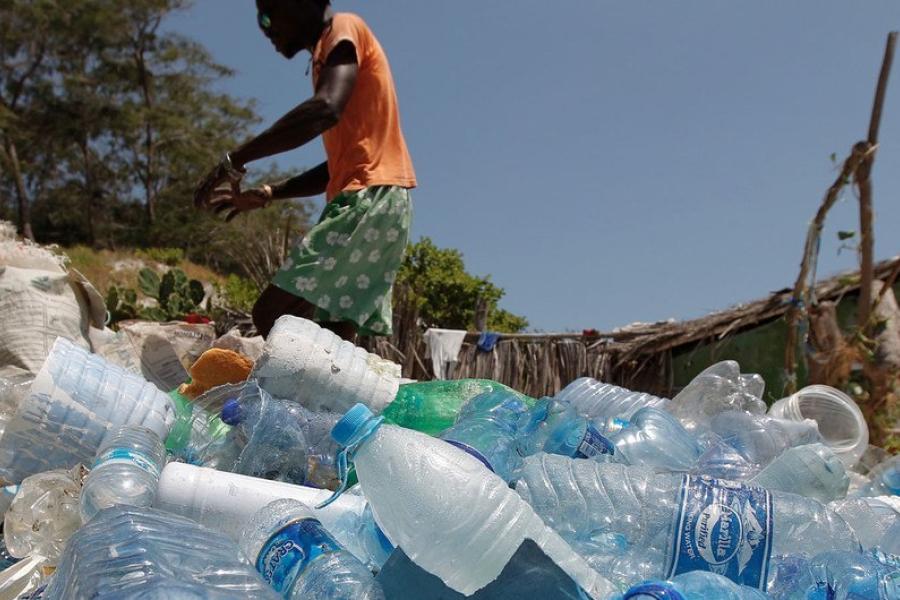Hopes rising for historic treaty to curb plastic pollution

Millions of tonnes of plastic end up in landfills and oceans every year with the potential to enter the food chain, damaging human health and the environment.
The world needs a “strong, ambitious and just” treaty to cut down on the mass-produced plastics which are helping fuel the climate crisis, said the head of the UN-backed secretariat steering international negotiations towards a binding agreement to end the scourge, in an interview this week with UN News.
Ever since the first world environment conference in Stockholm in 1972, environmental multilateralism has been growing, increasing pressure for a “binding international instrument” on plastic pollution.
Paving the way
This week, negotiators from around the world have been meeting in Nairobi, Kenya for the third session of what is formally known as the International Negotiating Committee (INC) to discuss proposed text.
“We need a strong, ambitious and just plastic treaty, but that is only the first step,” says Jyoti Mathur-Filipp, Executive Secretary of the Secretariat, which came into being through a resolution in the UN Environment Assembly,
She told UN News that it’s time for everyone with a stake in the treaty to start looking at how it can be implemented – a process she believes, can begin even before the treaty is fully adopted and enters into force.
The negotiations process is at its midpoint now. And for the first time, a text of the future treaty is being discussed by the Member States in its ‘zero draft’. The negotiators’ ambition is to have the final text ready by the end of next year and open for signing soon after.

© UNEP/Duncan Moore
There are hundreds of landfill dumpsites spread across Kenya with the largest being Dandora dumpsite in Nairobi.
From Nairobi, Ms. Mathur-Filipp, detailed progress so far saying that the momentum is there, and explained why tackling plastic pollution is so vital to protect human health and the environment.
This interview has been edited for clarity and length.
UN News: Plastics have been mass produced for over seven decades now, widely used in practically every sphere of life. What plastics are causing the most pollution and what are the consequences for the environment and human health?
Jyoti Mathur-Filipp: We produce around 430 million tonnes of plastic a year, two thirds of which are short-lived plastics, which soon become waste. Plastic pollution can have devastating impacts on our ecosystems and wildlife, our health and well-being, and the global economy.
The packaging sector is the world's largest generator of single use plastic waste. Approximately 36 percent of all plastic produced is for packaging. This includes single use food and beverage containers, 85 percent of which ends up in landfills or as hazardous waste.
Ninety eight per cent of single use plastic products are produced from fossil fuels or virgin feedstock.
Microplastics can enter the body through inhalation and absorption by the skin and can accumulate in organs, including in the placenta.
Some of the chemicals in microplastics are associated with serious health impacts, especially in women. Scientists have established links between exposure from chemical additives that leach from plastics, with obesity, diabetes, poor brain health and even cancer.
Research is still being done on the effects microplastics have on human health. And we do not know yet how dangerous they are.
Additionally, due to limited and inefficient waste management infrastructure, 40 percent of the world's garbage is burned, 12 percent of which consists of plastic. The burning of plastic waste has multiple health impacts, including increasing the risk of heart diseases and aggravating respiratory problems such as asthma and emphysema.
UN News: With all the threats that plastic pollution poses, why has there been no international agreement on the proper use and disposal of plastics before?
Jyoti Mathur-Filipp: Environmental multilateralism has grown significantly since the first ever international environmental conference in Stockholm (in 1972), following the determination, ambition and spirit of compromise that delivered the Paris Agreement. Countries are increasingly committed to addressing the transboundary nature of the triple environmental planetary crisis of climate change, nature loss and pollution and waste.
In March 2022, a historic resolution was adopted at the UN Environment Assembly to develop an international legally binding instrument on plastic pollution, including in the marine environment, creating the INC. We have now reached the midpoint of the process.
We are now at the third session of the committee in Nairobi and are working towards the adoption of the international legally binding instrument on plastic pollution by the end of next year.

UN News/Laura Quiñones
Marine debris, including plastics, paper, wood, metal and other manufactured material is found on beaches worldwide and at all depths of the ocean.
We also see the momentum of global environmental multilateralism growing in other issues with the loss and damage fund agreed at the last climate COP (COP 27 in Egypt) in Sharm El Sheikh and the adoption of the Kunming Montreal Global Biodiversity Framework last December at the Conference of the Parties of the Convention on Biological Diversity Conference (CBD COP).
UN News: The Intergovernmental Negotiating Committee (INC) is meeting in Nairobi this week for its third session. And, as the Committee’s Chair said, for the first time there is a particular text to discuss. What are the key elements of the so-called Zero draft and how do they address the root causes of plastic pollution?
Jyoti Mathur-Filipp: The zero draft text was prepared by the INC chair with the support from our Secretariat based on a mandate by the committee at its second session in Paris at the end of May. It was drafted based on a comprehensive approach that addresses the full life cycle of plastics, ranging from microplastics to the incentivization of non-plastic substitutes.
The text is now in the hands of Members. The narrowing down of different text options will likely take place at the next sessions of the INC in April and November next year, where we will have a clearer picture of the shape and direction of the future instrument.
UN News: What will be the next steps in the process? What will happen after the text is agreed upon?
Jyoti Mathur-Filipp: We hope to come out of this third session with a mandate for intercessional work and a mandate to develop the next iteration of the draft text of the instrument for consideration at INC-4, which will be held in April next year in Ottawa, Canada.

UNEP/Cyril Villemain
Local people from Watamu, Kenya, work with Local Ocean Conservation to pick up plastic on the beach.
At that session, members will likely further refine the text, and the Committee is expected to agree on the final text of the instrument at its 5th and final session to be held in the Republic of Korea in November 2024. This will be followed by a diplomatic conference in 2025, when members are expected to adopt the instrument and open it for signature.
UN News: What’s the key message behind all this process, that pertains to plastic pollution?
Jyoti Mathur-Filipp: Plastic pollution affects us all, so it is reassuring to see that the world is coming together here in Nairobi and at the subsequent sessions of INC to address this important issue. We need a strong, ambitious and just plastic treaty, but that is only the first step.
Once the instrument is adopted and eventually enters into force, the next crucial step will be ensuring its timely and effective implementation. So, I would like all Members and stakeholders to start looking at how implementation can start happening. Even before the Treaty is fully adopted and comes into force.




